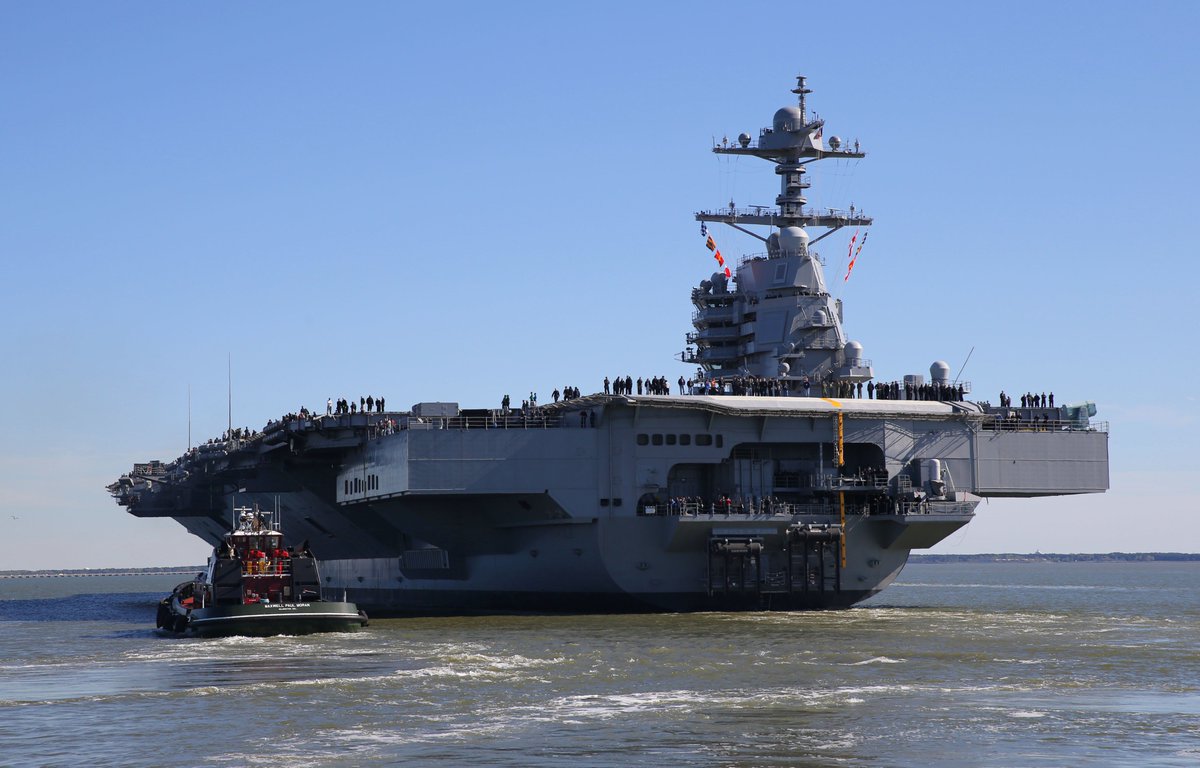The
is returning to Norfolk after just three months on deployment, a dramatic shift from the Navy’s standard seven-month deployment and a move that has been signaled at the highest levels of the military as the Navy moves to rebuild readiness and surge capacity.
The decision to cut the deployment short is in line with a concept pushed by Defense Secretary Jim Mattis and Chairman of the Joint Chiefs Gen. Joe Dunford known as “dynamic force employment,” which calls on the military to be more agile and less predictable. Truman’s abbreviated deployment to Europe, which also cut out the
, is a radical step toward the ultimate goal of restoring readiness so forces can be ready for a major conflict on short notice.
In a statement, new Fleet Forces Command head Adm. Christopher Grady said the order for Truman to return to home port was a “direct reflection of the dynamic force employment concept, and the inherent maneuverability and flexibility of the U.S. Navy.”
Grady also stressed that the move had nothing to do with the readiness of the ships in the strike group.
“The Truman Carrier Strike Group has had an incredibly successful three months in the U.S. 6th Fleet area of responsibility,” Grady said. “The ship accomplished every objective established for its crew, from striking ISIS in Syria to expanding partnerships and exercising with our friends and allies.
“Let me be clear – all returning units are 100 percent mission capable and will remain in the sustainment phase of the Optimized Fleet Response Plan, which means they will sustain warfighting readiness and be ready to surge forward or redeploy when called upon.”
In Navy-speak, the sustainment phase means that the ship will be held at deployment levels manning, training and general readiness so that it can surge on short notice in a crisis.
Dynamic force employment is a concept that ties in with the National Defense Strategy, and while explaining it in hearings Mattis has put emphasis on what it means for the Navy.
“The way you do this is [to] ensure that preparation for great power competition drives not simply a rotational schedule that allows me to tell you, three years from now, which aircraft carrier will be where in the world,” Mattis told House lawmakers earlier this year. “When we send them out, it may be for a shorter deployment. There will be three carriers in the South China Sea today, and then, two weeks from now, there’s only one there, and two of them are in the Indian Ocean.
“They’ll be home at the end of a 90-day deployment. They will not have spent eight months at sea, and we are going to have a force more ready to surge and deal with the high-end warfare as a result, without breaking the families, the maintenance cycles — we’ll actually enhance the training time.”
The Navy’s maintenance cycles have been disrupted badly in recent years as increasing demands and declining force structure pushed the Navy to the brink with deployments extending as long as 10 months or more.
Analysts who have looked at what Mattis wants to do have raised questions about whether the Navy’s current readiness cycle, known as the optimized fleet response plan, can support the kind of flexibility Mattis is looking for.



